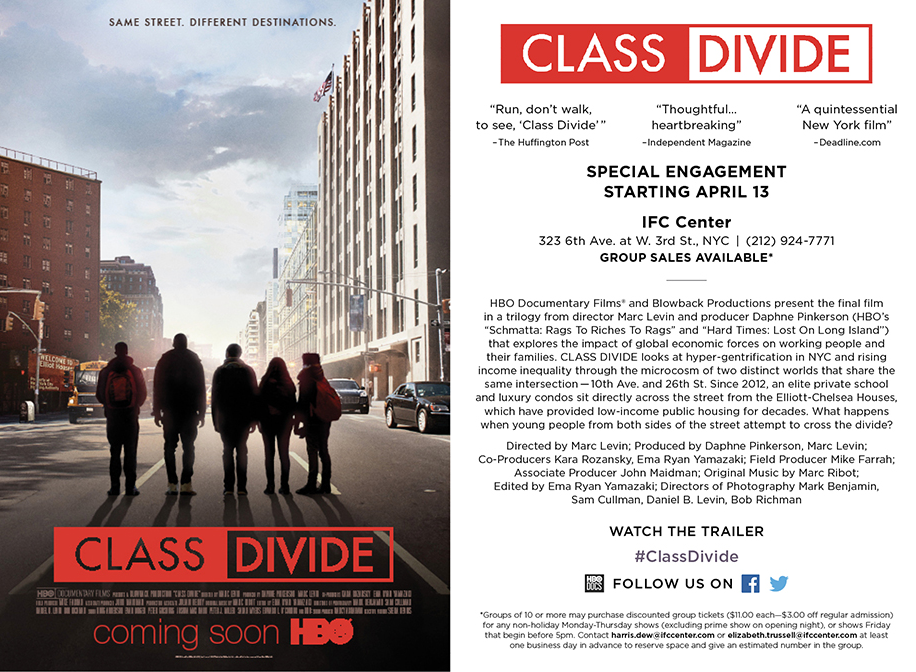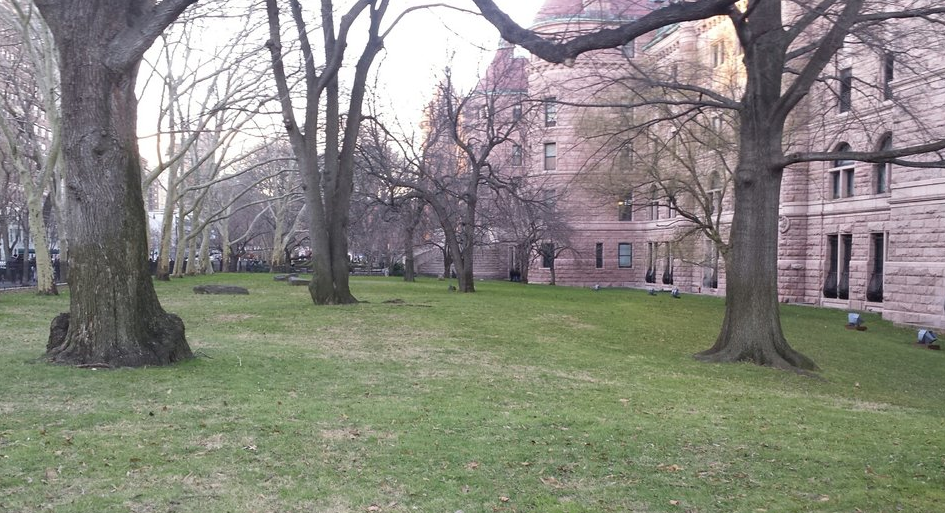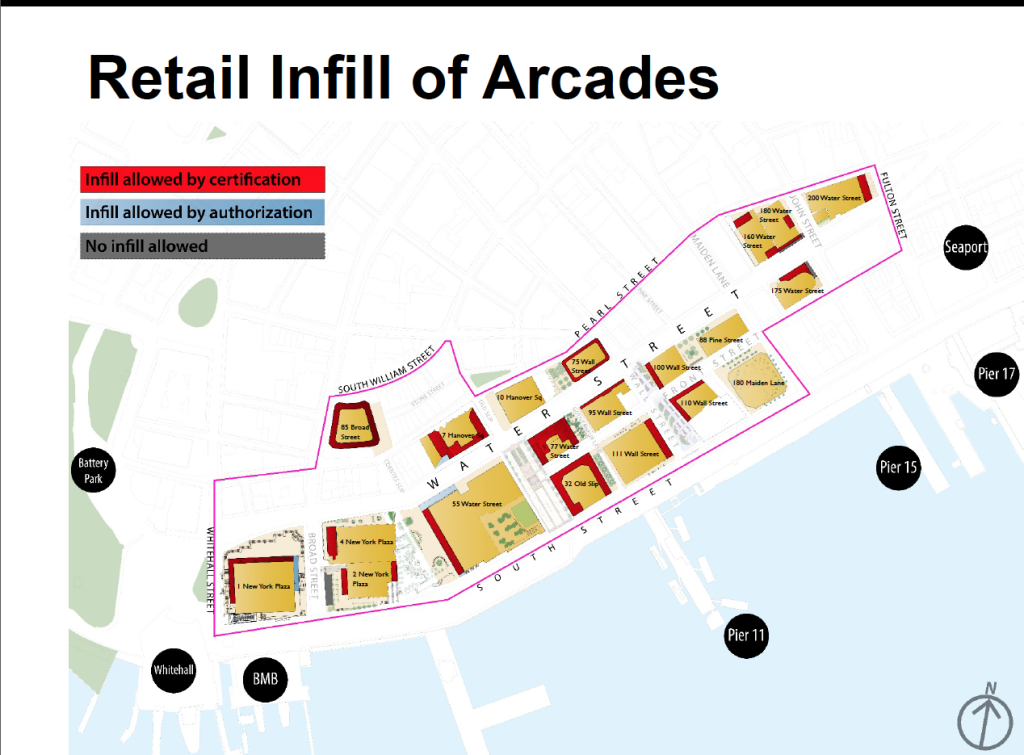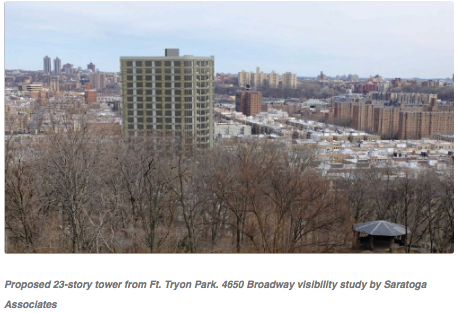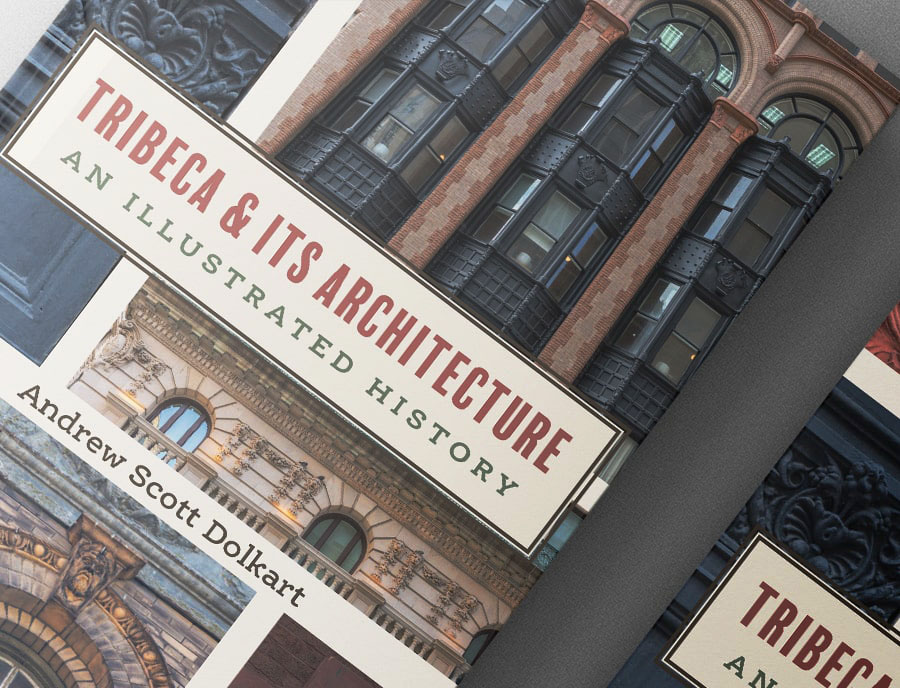Contents
- Here is a way to help right three wrongs at once
- Corruption probe widens to include possible pay-to-play land use deals — breaking news!
- What has happened to our LPC?
- Height, REBNY, and the Overton Window of the NY Times
- The growing sense of scandal in the De Blasio administration
- How did developer DDG get results at BSA?
- Note to City Planning: Vegetation makes us live longer
- Readers respond about 432 Park Avenue
- Ex-Mayor Bloomberg worsens New York City’s affordable housing crisis
- Michael Kimmelman and the Human-Scale City
- Los Angeles has the same fight that we have
- And some good news!
- Quote of the Week
- The Row House: a new series
- Jane Jacobs rides again
- Film recommendation: Class Divide
Of the many wrongs to the public realm taking place now, three need your help right now.
Go here to write a “one-click letter” to our politicians in opposition to the three wrongs listed below. Let them know that you oppose these bad deals involving abuse of public assets. Here are the three:
- Abuse of a public park: The American Museum of Natural History proposes to build on a substantial chunk of Theodore Roosevelt Park on 80th Street and Columbus Avenue, a public park that belongs to New York City. Four neighborhood groups have arisen to fight this take-over of public space. Read more about the fight here.
Theodore Roosevelt Park
- Abuse of 110,000 square feet of public-private plaza space: The Alliance for Downtown (a large real estate and financial industry BID in the financial district) has gotten the Department of City Planning to draft a zoning text amendment that would allow property owners to seize 110,000 square feet of public-private plaza space (POPS) and convert it to commercial retail, with no give-back of substance to the people of New York. This give-away is worth millions and the city isn’t even doing a rational economic analysis of the proposal. A community board member has been raising the hue and cry on this under-publicized deal. Among the reasons to oppose it:
- it is a total privatization of a substantial public asset and not a fair trade-off in economic terms for the people of NY. It violates the obligation set forth in the contract with the citizens of New York City made with developers of 20 buildings downtown. They received prime real estate in exchange for creating open outdoor public space. The City should not give away public space with no compensation to the public, nor any assurance of actual gain for the public.
- No specific plans have been advanced showing how the arcades could be developed nor examples provided of similar arcade infill in the City by which any measure could be taken of the proposed promise of successful “enlivenment” of the streetscape.
- In a city in which one can be comfortable outdoors for three out of four seasons, it would enclose and privatize public outdoor areas where instead events could take place and cafes could be located, for public use. Some of the arcades and plazas are already successful public spaces and the Downtown Alliance’s judgement that all of these spaces are “under-utilized,” “underperforming” and “poorly designed” is a view not shared by everyone on the community board. There is no consensus on the matter.
3. Abuse of both a park and a neighborhood: Developers and the City propose to despoil the upper Manhattan neighborhood of Inwood. It was recently celebrated in a Wall Street Journal article for its low- and mid-rise zoning that makes it one of the most human-scale parts of our city (see “Inwood’s Pleasant Time Warp:” here). In a kind of spot zoning (supposed to be illegal, no?), two high-rise developments are proposed at 4650 and 4566 Broadway. These high-rises are in the wrong place. They will seize public views and sunlight and cause excessive shadowing of Fort Tyron Park including shadowing of The Met Cloisters Museum. Fort Tryon Park is one of only 10 natural scenic landmarks in all of New York City. It is also listed on the National Register of Historic Places, in large part because of its majestic landscape and panoramic views that provide a reprieve from the built environment of the city. The out-of-scale character of these buildings is totally inappropriate for Inwood and will do triple harm: to the neighborhood, to a national landmark, and to a park. More density does not have to mean high-rise!
What to do? Write to our politicians and tell them we need a new approach to development that does not seize public assets or privatize views and sunlight to the highest bidder. Click here for a convenient letter that goes to all the politicians at once.
Corruption probe widens to include possible pay-to-play land-use deals — breaking news!
As reported in Crain’s on-line late Friday, April 22nd, here., the corruption probe of the De Blasio administration is expanding every day. Implicated are Marvel Architects, Hudson Companies in the Brooklyn Bridge deal, RAL companies, Michael Kohn, Park Tower Group, DDG and others. This is exciting, folks. Preet Bharara is our guy!
![]()
What has happened to our Landmarks Preservation Commission (LPC)?
Too often these days (well, maybe since the Bloomberg era), many of the LPC’s decisions as well as Commissioner commentary at hearings appear to the informed public as arbitrary and capricious. Well, “arbitrary and capricious” decisions can be the basis for an Article 78 Lawsuit against the Commission. Has there been a pattern of such poor decision-making in some neighborhoods? Maybe we should be thinking that way.
The most recent example of such decision-making took place during the recent hearing of the LPC to approve plans to make a landmarked Brooklyn bank part of a new super-tall tower in downtown Brooklyn. Of course, the LPC was NOT approving the tower and had no jurisdiction over it. No, that ridiculous height can be lain at the feet of a Bloomberg-era rezoning combined with the new ZQA changes. Rather, it is the Commissioner’s comments about the project that shock. The New York Times quotes an LPC Commissioner (Frederic Bland) thus: “To me, this project is enlightened urbanism at its best, where old and new are combined, where short and tall are combined in juxtaposition.” You can read Matt Chaban’s very short piece here. 6sqFt also reported on the same hearing in more detail. They noted: “The LPC was enamored with the project, calling it “flawless” and “enlightened urbanism at its best,” as well as touting that it “improved the vision of this historic landmark.” One commissioner even went so far as to say “It’s similar to the Parthenon sitting on the Acropolis.”
Do such quotes note strike anyone as breathtakingly Orwellian? Read the rest of 6sqft’s excellent coverage here.
But seriously…. Standards for the preservation of historic buildings give great deference to retaining the historic context of a landmark. In fact, here is a quote from our national standards on the issue: “It is NOT recommended to introduce new construction onto the building site which is visually incompatible in terms of scale, size, design, material, or color, which destroys historic relationships on the site…” and “it is NOT recommended to introduce a new building or landscape feature that is out-of-scale or otherwise incompatible with the setting’s historic character.” All these quotes are from the National Park Service’s guidelines for management of historic properties.
So why doesn’t our Commission consider such international and national standards as part of how they make decisions? Why, in fact, do they call the context of a historic district a “tyranny” as they did several years ago during a Tribeca hearing? In what world view do they call a super-tall, “enlightened urbanism”? And ShoP’s ho-hum bland super-tower is not even close to the Parthenon. Puhleeeez! It seems madness to this ear, or if I am going to be cynical, it is a troubling public relations spin designed to make us accept what is clearly a wrong. t is perhaps more evidence that we live in Jane Jacob’s “Dark Times,” of the kind Orwell told us was coming.
Meanwhile, here are photos of the mess coming to downtown Brooklyn (from 6sqft coverage).
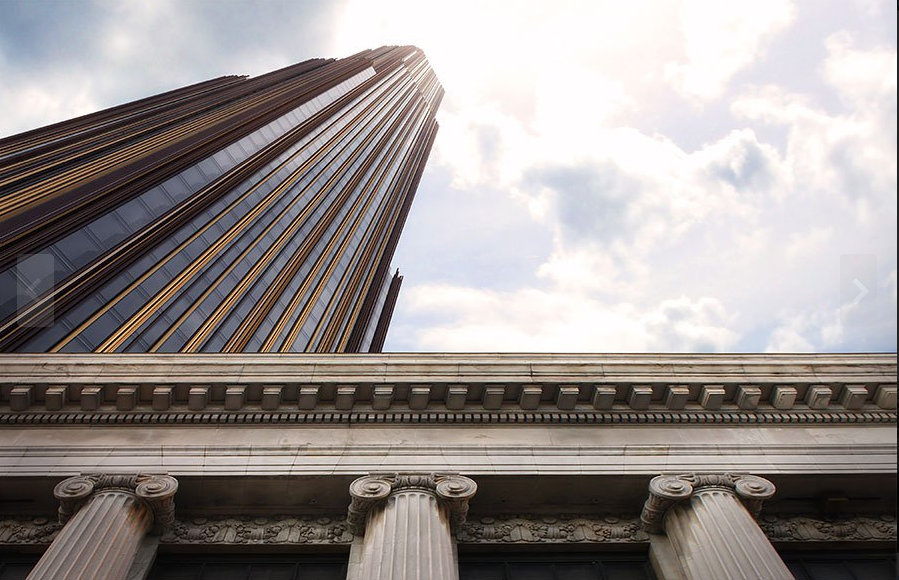
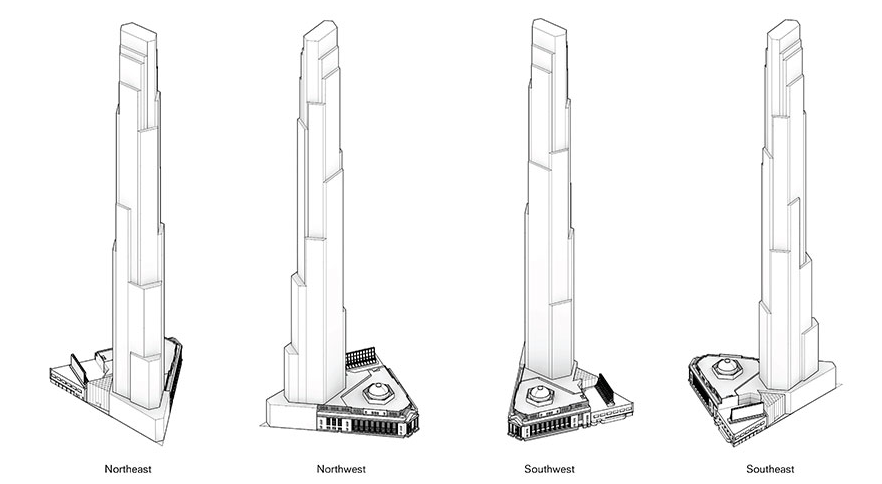
![]()
Height, REBNY, and the Overton Window of the New York Times
In an article about Donald Trump by Zeynep Tufekci in the New York Times here, I learned the following about a concept referred to as the “Overton Window.’ Here is the definition Tufekci offered:
“For decades, journalists at major media organizations acted as gatekeepers who passed judgment on what ideas could be publicly discussed, and what was considered too radical. This is sometimes called the “Overton window,” after Joseph P. Overton of the conservative Mackinac Center for Public Policy, who discussed the relatively narrow range of policies that are viewed as politically acceptable. What such gatekeepers thought was acceptable often overlapped with what those in power believed, too. Conversations outside the frame of this window were not tolerated.”
And reading that, a veil of obfuscation cleared. Of course! “Not tolerated.” Is that why preservation in general is covered in the Times as a topic about “Nimbys” or in tones urging endless compromise with developers? Is that why any discussion of urbanism has to have the taint of high Modernism to be acceptable? Is that why “height restrictions” are utterly taboo? Is that why op-eds by educated and informed community activists rarely if ever appear in the Times? Is that why the coverage of development fights or preservation issues is so biased towards developers?
It seems that all the important issues of urbanism today are outside the Overton window and thus forbidden and “not tolerated.” This means topics like: reforming our regulatory agencies such as the Bureau of Standards and Appeals, the Landmarks Preservation Commission, Economic Development, and City Planning; charter reform of how community board members are chosen; reform of our zoning code in a way that is more friendly to what residents actually want; community-based planning; and a human-scale build-out of our city. The list of topics related to zoning and development that need deep public inquiry and widespread debate is immense, but few ever get coverage. The interests of REBNY appear to have shrunk the Overton window in New York such that the things that actually matter to how we make decisions about our built environment are all silenced.
![]()
The growing sense of scandal in the De Blasio administration
The investigation into De Blasio’s fundraising is remarkable. Here is the latest from the Times and an even more worrisome report here from the Real Deal about how a developer of WeWork space on city-owned property is one of the biggest bundlers for De Blasio. And now, the Daily News (here) reports this:
“The News found at least 40 checks from developers with business before the city — and several giving amounts ranging from $10,000 to $100,000 either right before or soon after requesting — or in some cases receiving — favors from City Hall. ”
It appears that this investigation should more pointedly target how Big Real Estate uses lobbying and campaign gifts to assure that “their” people get appointed to regulatory bodies and to buy legislation, permits, zoning changes, and favorable deals for development projects. A case in point might be the giant tower by Larry Silverstein that is going up behind the Woolworth Building. It will soon house a Four Seasons Hotel as well as condos. It gets 421(a) tax breaks because the site is specifically mentioned by block and lot number in Albany legislation of 2013 as exempt from rules forbidding 421(a) deals south of 96th Street. Silverstein of course was a major contributor to the campaign by real estate interests to get Republican lawmakers into office in Albany. These and similar problems were the subject of the Moreland Commission Against Corruption and should be the subject of on-going investigation. Look harder, Investigators! Let there not be an Overton Window in your offices.
If, in the end, investigators discover that it is all mere legal lobbying and legal campaign donations, then something else needs to change. Here is part of the solution: create a lobbying fund with public money so that community groups can avail themselves of the same lobbying resources that Big Real Estate has. It would level the playing field. That would be good for democracy. If lobbying is to be legal, then not only the wealthy and corporate should have the means to indulge in it.
![]()
How did developer DDG get results at the BSA?
Investigators, get on this one! For Tribecans, it would be sweet vengeance. The Daily News (here) reports this:
“Take developer Joe McMillan, who last year proposed building a luxury condo on a sliver of highly valuable property in upscale Tribeca. [100 Franklin]
The community board opposed it, claiming that jamming this condo onto the tiny lot would “negatively impact the character of the neighborhood.” [And Tribeca Trust facilitated the legal battle at the BSA, undertaken by neighbors].
To alter zoning, builders must show they face a hardship they can’t overcome without the change. McMillan claimed he couldn’t make a profit unless he could build bigger. The board said he could build smaller and still make money.
“The idea is that you can’t vary every regulation in town,” said Michael Levine, Community Board 1’s consulting planner. “There must be a hardship behind it or the zoning would have no meaning.”
McMillan’s company, DDG Partners, hired Kramer Levin, the lobbyist law firm that includes as a partner Barry Berke, de Blasio’s former campaign treasurer. Kramer Levin reported lobbying the mayor’s office and the Board of Standards and Appeals for DDG.
The board approved everything they requested, allowing DDG to build 10 luxury condo units with retail space in one of the city’s most exclusive neighborhoods. In records, McMillan estimates his profits at $7 million.
Standards & Appeals granted DDG’s zoning change June 23. Eight days later, one of DDG’s limited affiliates donated $10,000 to De Blasio’s Campaign for One New York.”
Oh come on. How much more do we need to get investigators to bring McMillan in for questioning! And when we Tribecans were fighting the building (it was 100 Franklin Street), why did we waste time and money on lawyers when we could have just donated more to the Campaign for One New York? What innocents we were!
Here is McMillan, and a photo of the trees he is destroying for the ugly building that we fought so hard against.
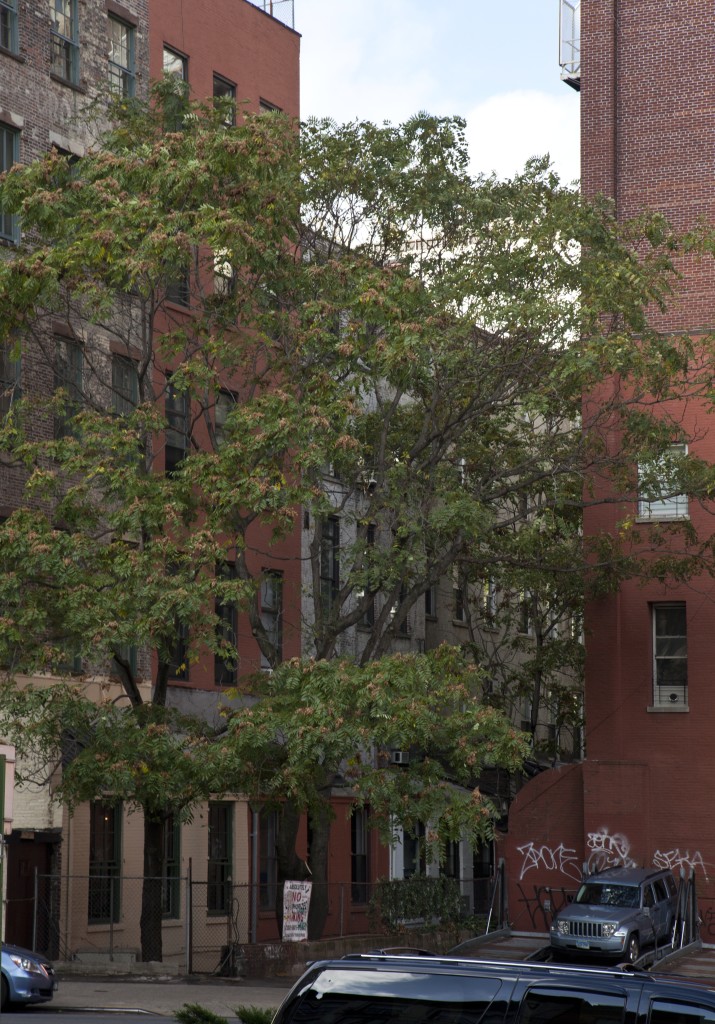

![]()
Note to City Planning: Vegetation makes us live longer
The Times reported last week on research by Peter James of Harvard. After controlling for socioeconomic status, age, race, body mass, physical activity, smoking, and education, data show that people living in the “highest 1/5th of the studied population” in terms of nearness to visible outdoor vegetation surrounding their homes (street trees, parks, parklets, gardens, etc.) had a 12% reduction in mortality.
But we knew that already, didn’t we? It’s called the Biophilia Hypothesis. Does it imply that those who have views of Central Park are going to live longer than the rest of us? Yes, it does.
But at least now we have proof of what common sense has always told us. This research presents a thorny challenge to urban planners and to the fans of hyper-density in New York: how do you reconcile humanity’s physical need to be near vegetation with the idea that we have to increase density via the building of skyscrapers everywhere? If the sight of outdoor vegetation makes us live longer, how should a democratic society design cities in an equitable manner?

![]()
Readers respond about 432 Park Avenue
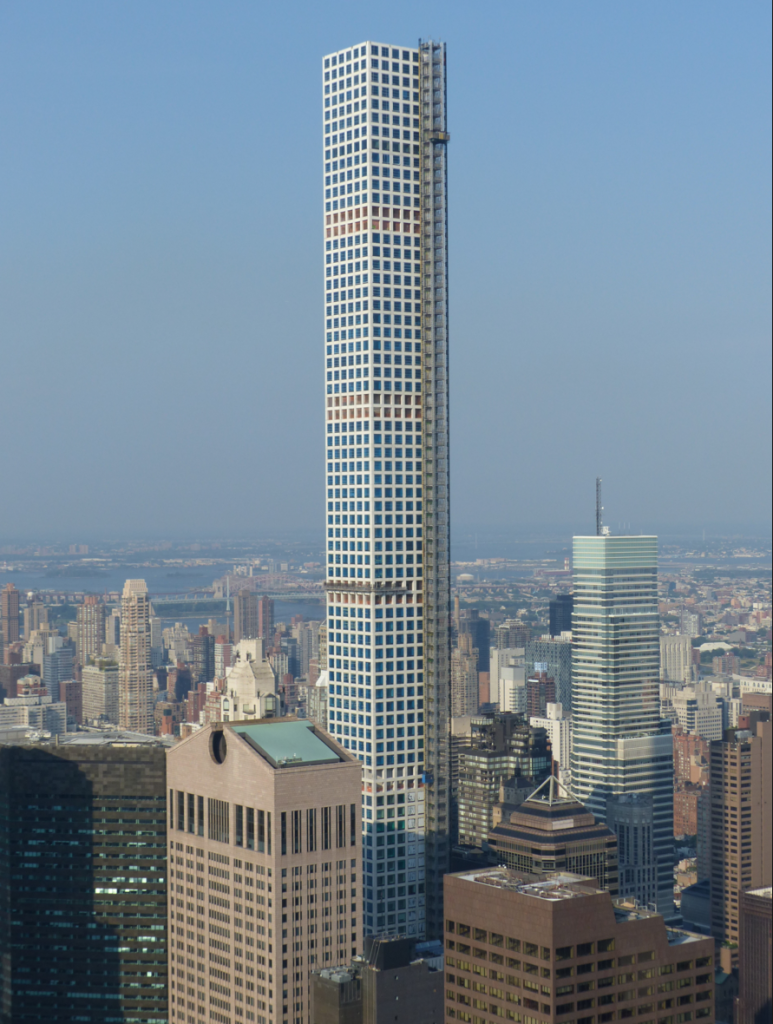

432 Park Ave
Last week a reader wanted to know how a monstrous building like 432 Park Avenue happens. Below are three of the most useful responses from readers.
The first answer comes from author, architect and urbanist John Massengale. He offered an excellent brief summary of the problem. Another reader sent in a photo of the building that was demolished to make way for 432 Park. It was the beautiful Drake Hotel! Save the View in Brooklyn sent a link to an excellent, longer essay describing how the problem emerged throughout the city in the first place.
Here is Massengale’s expert explanation:
Outside of building massing and building placement, New York City does not regulate what buildings look like. The New York City Planning Commission has some say in aesthetic matters, because it can make design part of the negotiations over building approval. But that process is reactive and personal, dependent upon who is serving as Commissioner and what influences have been brought to bear on the Commissioner’s boss, the Mayor.
The New York City Landmarks Preservation Commission has input on work in historic districts and on designated landmarks, but that is again done through negotiation and according to the personal preferences of the 11 Commissioners, who are appointed by the Mayor. Three of the Commissioners are required to be architects, who can frequently favor work which is “of its time,” meaning Modernist.
During the Bloomberg administration, there was an emphasis on “innovative, challenging” new buildings designed by Starchitects. As the Planning Commissioner said, “Design is, frankly, part of a long term strategy for New York City to compete on the global stage. Great design, innovative, challenging design, keeps a city young, and vibrant and compelling, It shows that a city importantly is open to change, entrepreneurial thinking and creative engagement. Density, diversity, tolerance and aspiration are all quintessential New York City qualities, that are translated through the language of city design, and are key to attracting city investment.” 432 Park Avenue is one of the innovative, challenging new buildings attracting investment.
In other words, during the time that Mayor Bloomberg was in office, the Real Estate Board of New York (REBNY)—a group that includes the richest developers in New York, who make REBNY the most powerful group in New York—discovered that they could make enormous amounts of money building shiny glass towers designed by Starchitects with an emphasis on architectural novelty. What made these buildings so profitable was that they could be sold sight unseen to the global 1%, who thought they were stable investments (and frequently a place to hide illegal money).
The second most powerful group in New York—Wall Street—has also made a lot of money from these shiny towers. Big Finance likes formulas for real estate investment that produce predictable profits, and the construction of these towers is cheap, while their sale to the international super-rich has produced a very high return on investment. Because of the wealth thrown off by global capitalism, these towers became one of the most profitable real investment formulas of all time, for both the developers and those who financed them.
So multiple factors—including global capitalism, an international 1% looking for places to put money, REBNY, record-setting profits, a billionaire mayor who thought billionaires were great for the city, and an administration enamored with Starchitecture—combined to produce a situation in which a “challenging” buildings like 432 Park or 56 Leonard Street were seen as good for New York. Regulating their design was seen as a backward-looking attitude that would hold business and the city back.
The situation makes me think of Leon Wieseltier’s response to the Facebook investor who took over The New Republic and brought in an editor from Silicon Valley. Here’s how that was reported in a recent New Yorker: “Wieseltier responded to Hughes with a message about stewardship. ‘We are not only disruptors and incubators and accelerators,’ he said, seemingly mocking the language that Hughes and Vidra often used. ‘We are also stewards and guardians and trustees.’ He went on, ‘The questions that we must ask ourselves, and that our historians and our children will ask of us, are these: How will what we create compare with what we inherited? Will we add to our tradition or will we subtract from it? Will we enrich it or will we deplete it?’”
Second, here is a photo of what we lost when 432 Park went up, the old Drake Hotel. The loss of it was surely a depletion of the joys of being in NYC.
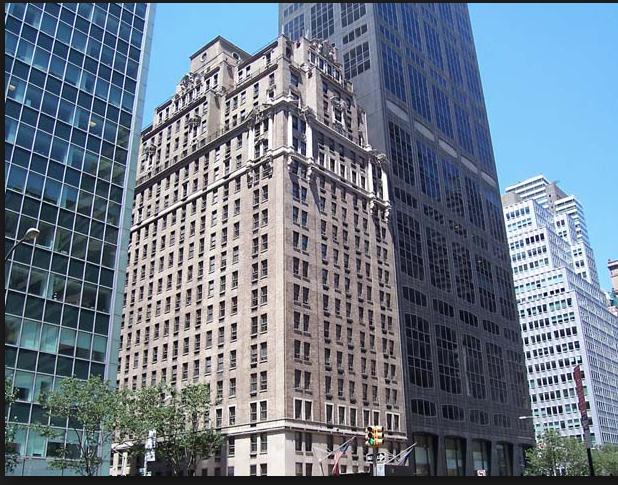
Third, Save the View, the organization fighting the destruction of the viewscape around the Brooklyn Bridge, sent in a link to two wonderful essays that analyze the destruction of our city, summarized in the phrase, “wholesale remodeling of our city”. Here is the link to those great essays, one in particular by the thoughtful Laurie Barrett. I encourage all to take a few minutes to read it.
![]()
Ex-Mayor Bloomberg worsens NYC’s affordable housing crisis
Back in the Bloomberg administration, Bloomberg’s appointees hatched the idea of “hyper-density” and micro-units solution to both the affordable housing problem and as a way to shore up the real estate tax base, since corporate taxation was declining as source of revenue. De Blasio appears to have bought into the same idea: sell tower penthouses to millionaires the world over, and let the lower floors be micro-units or affordable housing. The idea is to flood the city with luxury units so as to lower the price of luxury units and then in a magical trickle down effect, the rental price of housing for newly arrived immigrants in the boroughs will fall. By the same reasoning, anything that reduces the housing supply for the rich in any way whatsoever, will increase (through trickle down effects on prices) the price of housing for the poor. Such theories have been promoted by economists such as Edward Glaeser.
Now we learn from the New York Times real estate section here that former Mayor Bloomberg – who lives in a beautiful townhouse on a beautiful human-scaled block in a beautiful human-scaled historic district – has been expanding his personal square footage by buying all the units in an adjoining townhouse, reducing thereby the number of housing units in our city! According to Glaeser’s theory, our former Mayor is reducing the number of luxury units overall in the city. And that will eventually result in an increase in the price of affordable housing for newly arrived immigrant workers in the boroughs. How could our billionaire ex-mayor, promoter of hyper-density, do such a thing?
What say you? Should our billionaires be allowed to reduce the housing supply in this way? Or is the theory just simply wrong? Maybe zoning reform should address that one…
Here is the photo the Times used to show the two townhouses:
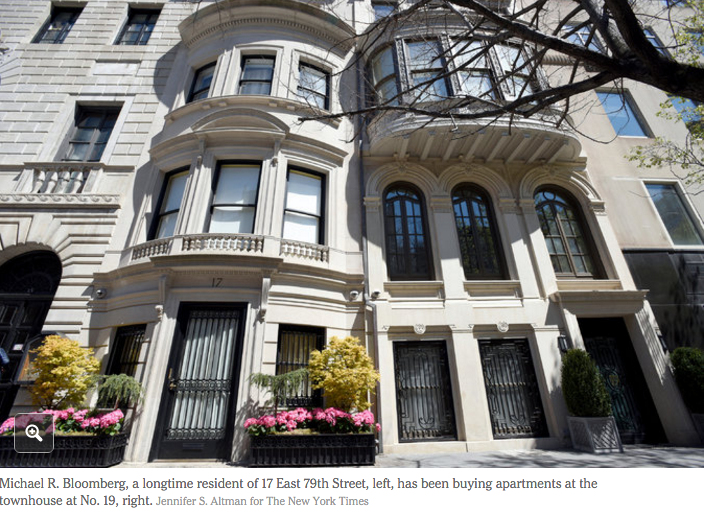
![]()
Michael Kimmelman and the human-scaled city
Michael Kimmelman, the architecture critic at the Times, published one of his best essays recently, entitled “The Craving for Public Squares.” Yet it appeared not in The Times but in The New York Review of Books. You can read it here (but it might be paywalled). In it, Kimmelman does some of his best work, waxing nostalgic about the human-scaled plazas and public spaces he has known, particularly the Ludwigkirchplatz in Berlin. Here is a quote from Kimmelman at his best (although the Nabokov quote helps too) :
On our final day before moving back to New York, one of those cruelly perfect, sun-kissed summer Sundays in Berlin, my older son and I returned to the square for a few last games. The square was packed with newly arrived Russian émigrés and children carrying ice cream cones from the Italian gelateria facing the playground. “Everything is as it should be,” Nabokov once wrote. “Nothing will ever change, nobody will ever die.” The smell of fresh bread wafted from an organic bakery, just off the square, mixing with the perfume of lindens in bloom. Skateboards rattled over the stone plaza. The bells tolled for what seemed like an hour that afternoon. We played game after game, vainly hoping to slow time.
And here are some photos of the human-scaled place -Ludwigkirchplatz- that inspired Kimmelman.
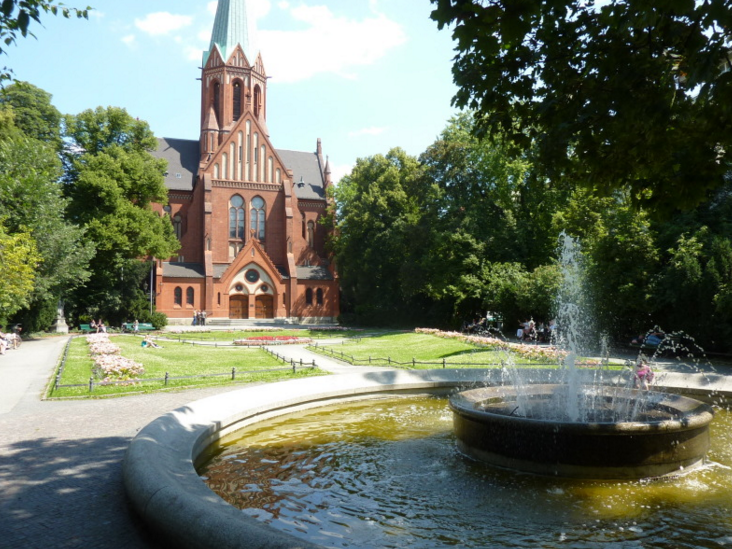
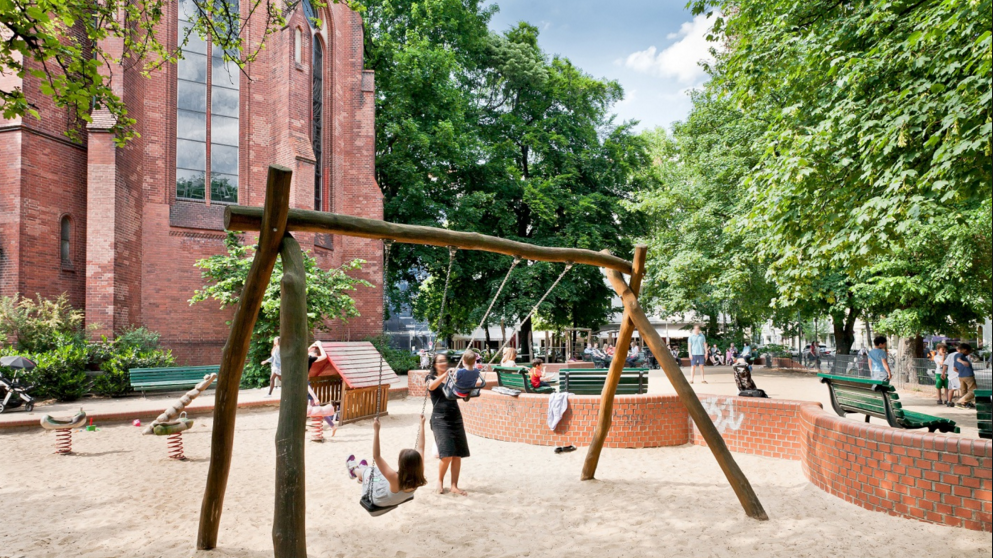
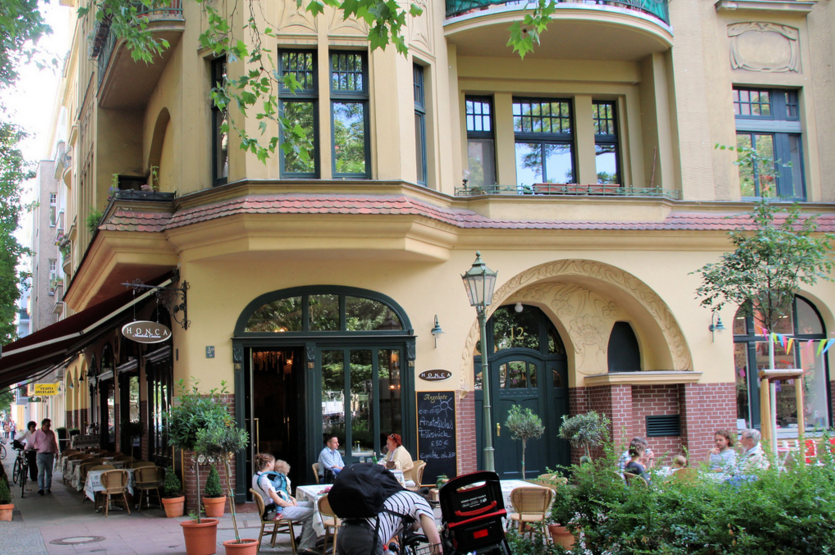
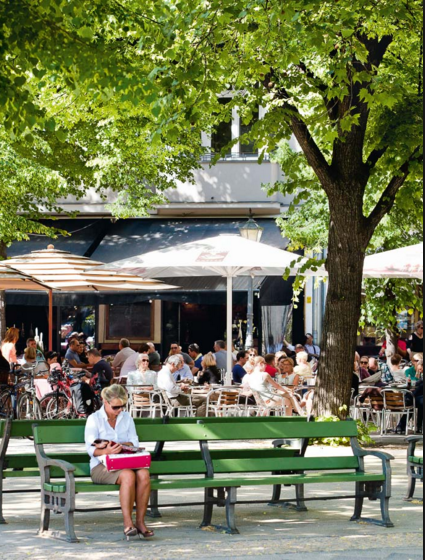
![]()
Los Angeles has the same fight that we have
Read the manifesto of the “Coalition to Preserve L.A.” below, or browse their website here.
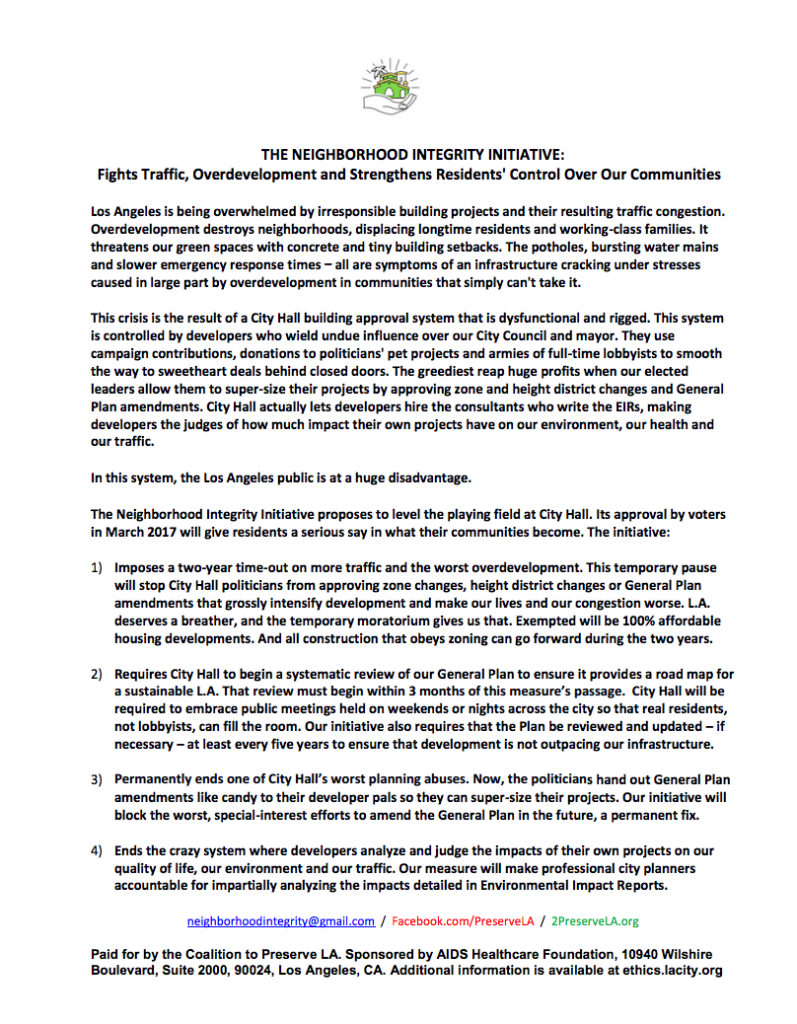
![]()
And some good news!
The Landmarks Commission finally extends (a bit, and not enough) Park Slope Historic District
It means the LPC can do the right thing from time to time. So the question is: how to get it to do the right thing more systematically? Read all about it in DNAInfo here.
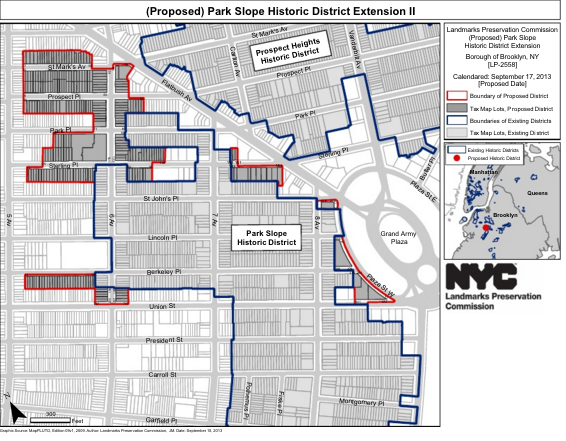
![]()
Quote of the Week
Mark Crispin Miller’s Editorial in Huffington Post about De Blasio
The quote is from our own Mark Crispin Miller of NYC Faculty Against the Sexton Plan. Read the full op-ed here. The quote is:
Under Bloomberg, as Jeremiah Moss wrote in Vanishing New York at the end of 2013, “we lost approximately 6,926 years of New York City history in only a dozen years” — a suicidal process that our “liberal” mayor has never questioned, and continues to abet, thus making New York City ever less affordable and (therefore) less diverse (despite his much-hyped plan to solve that problem), as well as darker, uglier, less green, and way less interesting.
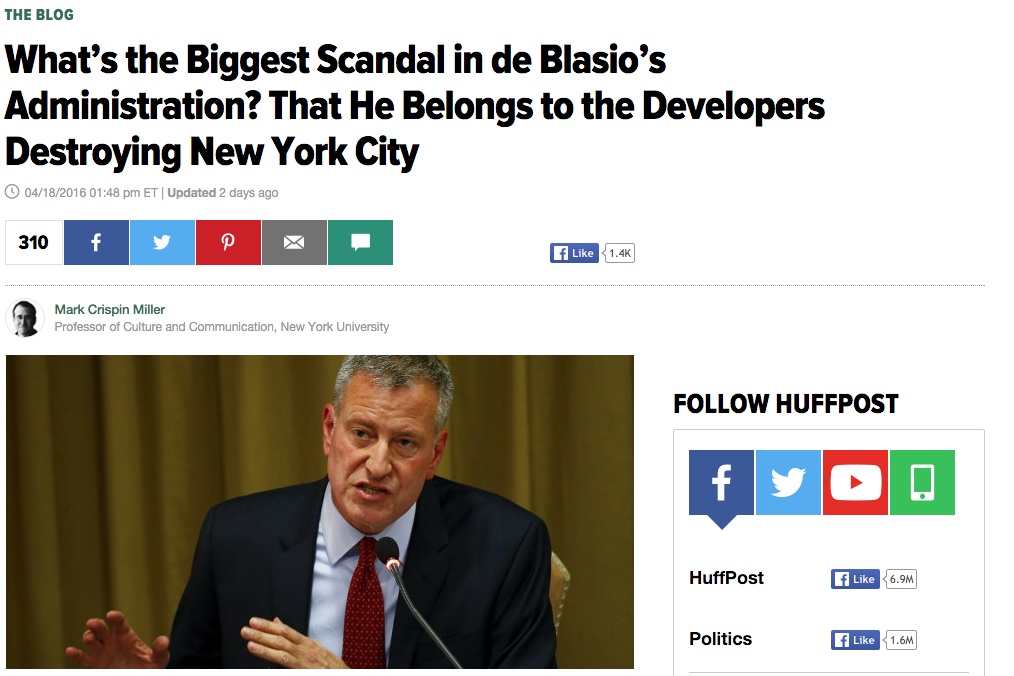
The Row House: a new series
Urban Omnibus has an interesting new series of articles about the row house. It’s a follow-up on their tower-in-the park series. On the one hand, the series is full of irritating and nonsensical modernist biases, calling row-houses “outmoded” and those who like them, “nostalgic” (why then does one affordable housing developer I know build them for police union members?) On the other hand, the first article has lots of interesting history about this form of housing in NYC and great illustrations. Read part one of the series here. 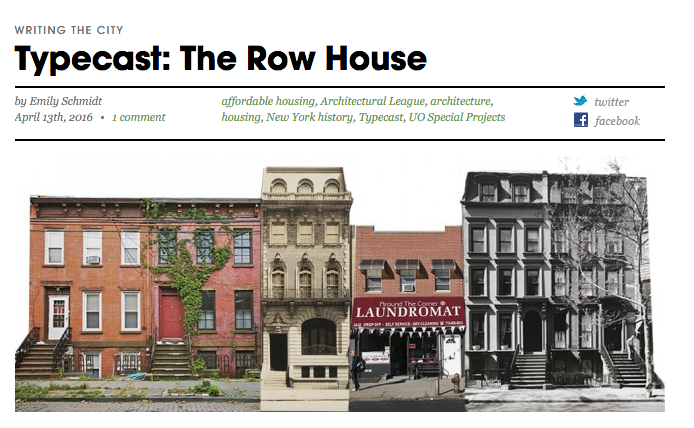
Jane Jacobs rides again
The Daily Beast published a nice potted history of Jane Jacobs and the battle to save Washington Square, where Sanders had his big rally before the primary. Read it here, and note links at the end of it to a fascinating Jane Jacobs documentary project.
Film Recommendation: Class Divide
A member of our steering committee pointed out there is a limited showing of this fascinating film that documents the process of gentrification in Chelsea. See it at the IFC here.
